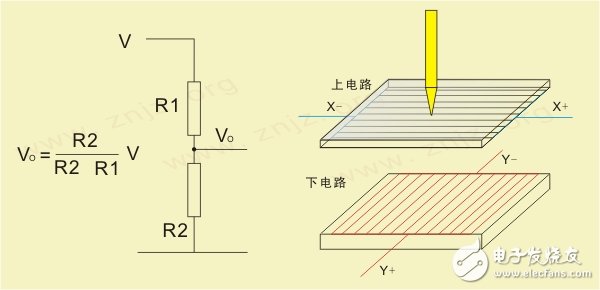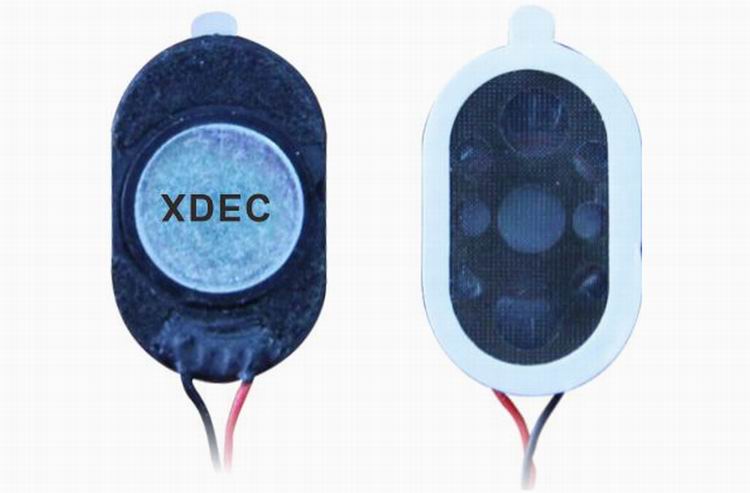According to the working principle of the touch screen and the medium for transmitting information, we divide the touch screen into four types, which are resistive, capacitive inductive, infrared, and surface acoustic wave. Each type of touch screen has its own advantages and disadvantages. To understand the type of touch screen that is suitable for that occasion, the key is to understand the working principle and characteristics of each type of touch screen technology. The following briefly introduces the various types of touch screens described above:
1, resistive touch screen
This touch screen is controlled by pressure sensing. The main part of the resistive touch screen is a resistive film screen that is very compatible with the surface of the display. It is a multi-layer composite film with a layer of glass or hard plastic as the base layer and a transparent oxide metal on the surface (transparent conductive). Resistor) Conductive layer, covered with a layer of outer surface hardened, smooth anti-scratch plastic layer, coated with a coating on its inner surface, with many small (less than 1/1000 inch) transparency between them The isolation point separates the two conductive layers from each other. When the finger touches the screen, the two conductive layers have contact at the touch point position, the resistance changes, and signals are generated in both the X and Y directions, and then sent to the touch screen controller. The controller detects this contact and calculates the position of (X, Y), which then operates according to the way the mouse is simulated. This is the most basic principle of the resistive touch screen. The key to resistive touch screens lies in material technology. Commonly used transparent conductive coating materials are:

A, ITO, indium oxide, weak conductor, the characteristic is that when the thickness drops below 1800 angstroms (A = 10-10 meters), it will suddenly become transparent, the light transmittance is 80%, and then the light transmittance is reduced. It drops to 80% when it reaches 300 angstroms. ITO is the main material used in all resistance technology touch screens and capacitive technology touch screens. In fact, the working surface of the resistive and capacitive technology touch screen is ITO coating.
B. Nickel-gold coating, the outer conductive layer of the five-wire resistive touch screen uses a nickel-gold coating material with good ductility. The outer conductive layer is frequently touched, and the nickel-gold material with good ductility is used for the purpose of prolonging the service life. , but the process cost is relatively high. Although the nickel-gold conductive layer has good ductility, it can only be used as a transparent conductor. It is not suitable as a working surface of a resistive touch screen because it has high conductivity and the metal is not easy to be very uniform in thickness, and it is not suitable as a voltage distribution layer. Floor.
1.1 four-wire resistive screen
The four-layer transparent metal layer of the four-wire resistance analog technology works with a constant voltage of 5V per layer: one vertical direction and one horizontal direction. A total of four cables are required. Features: High resolution, high speed transmission response. Surface hardness treatment to reduce scratches, scratches and chemical treatment. With smooth and matte finish. One calibration, high stability, never drift.
1.2 five-wire resistive screen
The base layer of the five-wire resistance technology touch screen applies the voltage fields in both directions to the conductive working surface of the glass through the precision resistor network. We can simply understand that the voltage field time division work in both directions is added to the same working surface. The outer layer of nickel-gold conductive layer is only used as a pure conductor, and the position of the touch point is measured by a method of detecting the X-axis and Y-axis voltage values ​​of the inner ITO contact point after touch. The inner layer of ITO of the five-wire resistive touch screen requires four leads, the outer layer is only used as one conductor, and the touch screen has five lead wires. Features: high resolution, high speed transmission response. High surface hardness, reduced scratches, scratches and chemical treatment. 30 million contact points at the same point are still available. The conductive glass is the medium of the substrate. One calibration, high stability, never drift. Five-wire resistive touch screen has high price and high environmental requirements
1. 3 limitations of the resistance screen
Whether it is a four-wire resistive touch screen or a five-wire resistive touch screen, they are a completely isolated working environment for the outside world. They are not afraid of dust and moisture. They can be touched by any object. They can be used for writing and drawing, which is more suitable for industrial control. And the use of limited people in the office. The common disadvantage of resistive touch screens is that because the outer layer of the composite film is made of plastic material, an uninformed person who is too hard or uses a sharp touch may scratch the entire touch screen and cause scrapping. However, within the limits, scratching only hurts the outer conductive layer. The scratch of the outer conductive layer is irrelevant for a five-wire resistive touch screen and fatal for a four-wire resistive touch screen.
Tablet speaker is a kind of micro speaker unit which uses a diaphragm made of Mylar material. Mylar speakers are of ultrathin design and lightweight and clear voice. It is widely used mobile internet devices (tablet, notebook-).
There are two types of Mylar speakers from the shapes:
1) Round shapes, we have products from 10mm to 57mm in diameter.
2) Oblong shape, we have products in sizes of 1510/1712/1813-..


FAQ
Q1. What is the MOQ?
XDEC: 2000pcs for one model.
Q2. What is the delivery lead time?
XDEC: 15 days for normal orders, 10 days for urgent orders.
Q3. What are the payment methods?
XDEC: T/T, PayPal, Western Union, Money Gram.
Q4. Can you offer samples for testing?
XDEC: Yes, we offer free samples.
Q5. How soon can you send samples?
XDEC: We can send samples in 3-5 days.
Tablet Speaker
Tablet Speaker,Notebook Speaker,Laptop Speaker,Laptop Table Speaker
Shenzhen Xuanda Electronics Co., Ltd. , https://www.xdecspeaker.com